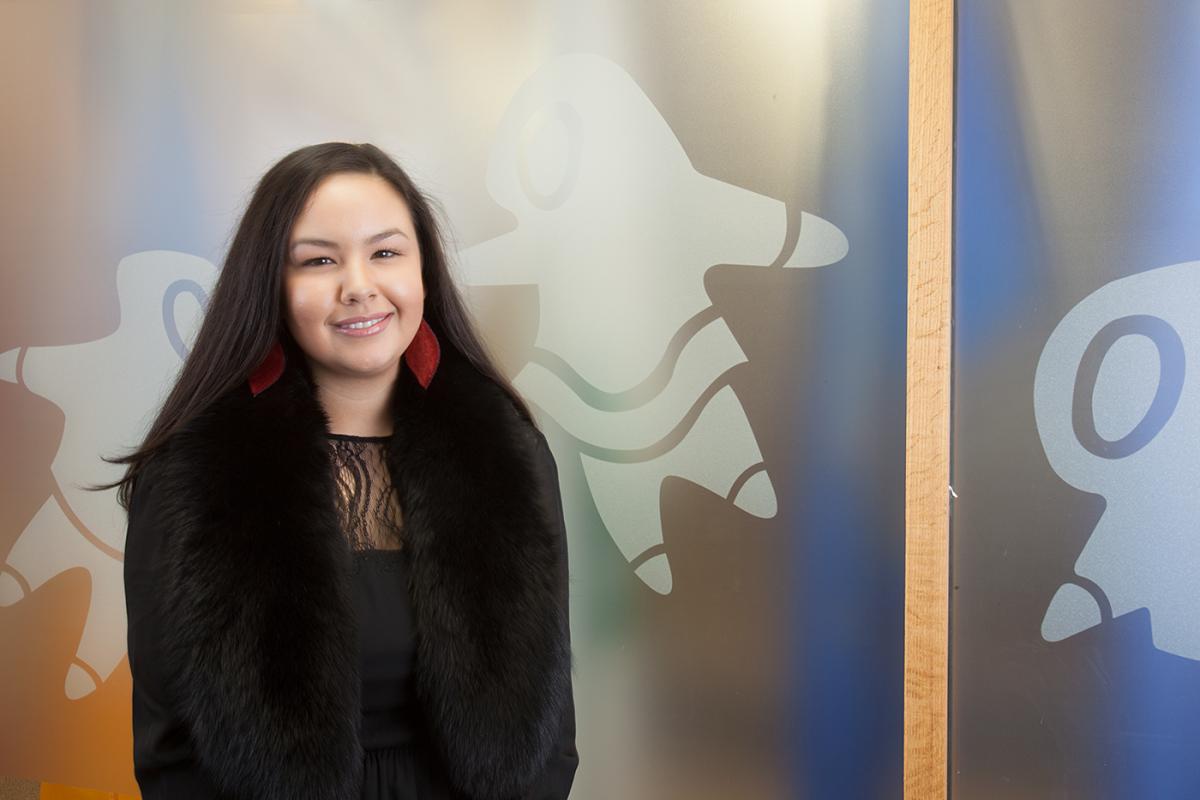Climate Change, Women's Issues and Inuit Culture

The president of the National Inuit Youth Council Maatalii Okali. Photo: Jessica Finn, Canadian Geographic
As president of the National Inuit Youth Council, Maatalii Okalik is a voice for Inuit youth, raising awareness for their issues and concerns, as well as the challenges faced by all Inuit. She brought that unique viewpoint to the COP21 climate change conference in Paris in 2015. In April 2016, she was presented the Outstanding Young Woman Award from the Qulliit Nunavut Status of Women Council for her strong leadership among Inuit youth and engaging world leaders on their issues. Here, Okalik discusses women in Inuit culture, reconciliation and language, and her role models.
On issues facing Inuit women
Inuit women have a very unique place in our culture and always have. However, there are a number of issues facing Inuit women in Canada today. We have a severe housing crisis, virtual homelessness and a changing climate. These issues affect all Inuit, but Inuit women in particular.
Inuit women have a close relationship with food security. For example, it is a woman’s responsibility to clean and dry animal skins to clothe their families. Many women have said they’ve noticed a change in the skins, and climate change plays a role in this. In the Baffin region right now, within Nunavut, there is a moratorium on caribou hunting. That impacts how we are able to feed our families. Also when hunters go missing on the sea ice, because of the changing environment, there’s a burden placed on women who now have to care for their families alone. Those numbers are increasing.
On reconciliation and voting rights
The more that we create awareness of Inuit history, the better. Voting rights for Inuit women came much later [than other groups of women in Canada] and ultimately were based on the federal government’s assimilation policies to ensure that Inuit, because we assert sovereignty along 50 per cent of this country’s coastline, became citizens and voting members of the populace. However, it did not mean the government invested in us to ensure we lived a healthy quality of life. These voting rights were conditional on family allowance, relocation, children attending residential schools, etc. Unfortunately, the intergenerational effects of that very recent history — my grandparents generation and my mom’s generation as residential school attendees — led to a number of negative impacts that are intrinsically tied with reconciliation.
On re-learning Inuit language
I’m very open with the fact that I am re-learning Inuktitut to break some of those stigmas within Inuit communities, as well as non-Inuit communities, about language reclamation and revitalization. Inuit celebrate the fact that, as a unique indigenous group in Canada, we have the highest percentage of language use and retention. However, that is beginning to decline. For example, in Nunatsiavut 25 per cent of Inuit are fluent in Inuktitut according to the census, and in some regions, that number can be as high as 90 per cent depending when colonization happened. Inuit youth have a vested interest in strengthening our language so that one day, all Inuit can speak and work in Inuktitut. I encourage Inuit to work together to help those who are learning and re-learning Inuktitut to continue to do it in a positive way.
On her role models
There are a number of really strong Inuit women, and I think there needs to be a shift in how societies look at women in leadership roles. Our women are one of the backbones of our society, and they don’t get enough credit.
In my immediate upbringing, I would definitely commend my mother, Looee Okalik, who raised us as a single mother principled in Inuit ways of life and knowing that we had a responsibility to our community, our elders and the greater global community. She really had an impact on my worldview, from an Inuit perspective within this colonial situation, and she gave me a lot of the tools that I require to do the work that I do. Another one is Rosemary Kuptana, former president of ITK [then called the Inuit Tapirisat of Canada or ITC], who has the prowess of a fighter, but is very elegant in her knowledge and navigation of the legal process. Also, my grandmother. She passed away when I was two months old, but I’m named after her and was raised on stories of her, which had an impact on who I became.
On an Inuit woman’s right of passage
Another role model is my arnaliaq. For Inuit women, it’s a right of passage to become an arnaliaq, which in the past, would have been similar to a midwife to non-Inuit, but now is more like a godmother with certain roles and responsibilities to the male or female child as they are born and raised. After the child is born, the arnaliaq professes its future and transmits different characteristics and qualities that the child will possess in its lifetime. That woman has the responsibility to clothe the child and has a hand in raising it. If the child is a boy, he has a responsibility to provide his arnaliaq with his first catch as a hunter and continuously feed her throughout his lifetime. If the child is a girl, she would have to give her first craft or creation to her arnaliaq and continue to gift her throughout the child’s lifetime. I myself am an arnaliaq to my five-year-old niece. She strengthens me. My mom handed her to me when she was born and said, “Tell her who she is.” At first, I had no idea what to do, but I took my niece and just like water flowing, my responsibility came naturally to me and I can confirm throughout her life so far, everything I professed has come true and it will only prove truer throughout her lifetime.
This article was first published at Canadian Geographic by Michela Rosano. You can see the original post here.